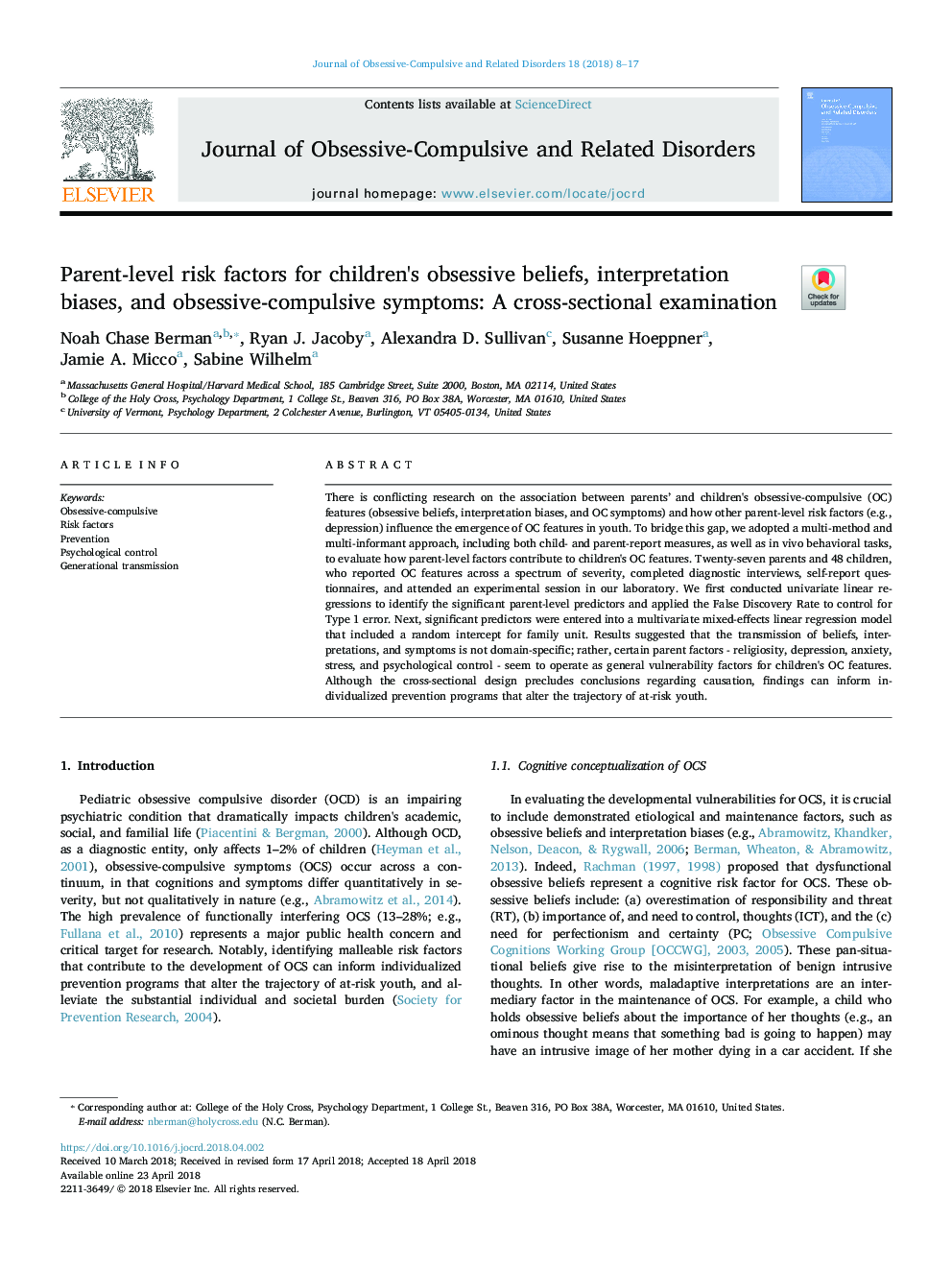| Article ID | Journal | Published Year | Pages | File Type |
|---|---|---|---|---|
| 7268928 | Journal of Obsessive-Compulsive and Related Disorders | 2018 | 10 Pages |
Abstract
There is conflicting research on the association between parents' and children's obsessive-compulsive (OC) features (obsessive beliefs, interpretation biases, and OC symptoms) and how other parent-level risk factors (e.g., depression) influence the emergence of OC features in youth. To bridge this gap, we adopted a multi-method and multi-informant approach, including both child- and parent-report measures, as well as in vivo behavioral tasks, to evaluate how parent-level factors contribute to children's OC features. Twenty-seven parents and 48 children, who reported OC features across a spectrum of severity, completed diagnostic interviews, self-report questionnaires, and attended an experimental session in our laboratory. We first conducted univariate linear regressions to identify the significant parent-level predictors and applied the False Discovery Rate to control for Type 1 error. Next, significant predictors were entered into a multivariate mixed-effects linear regression model that included a random intercept for family unit. Results suggested that the transmission of beliefs, interpretations, and symptoms is not domain-specific; rather, certain parent factors - religiosity, depression, anxiety, stress, and psychological control - seem to operate as general vulnerability factors for children's OC features. Although the cross-sectional design precludes conclusions regarding causation, findings can inform individualized prevention programs that alter the trajectory of at-risk youth.
Related Topics
Health Sciences
Medicine and Dentistry
Psychiatry and Mental Health
Authors
Noah Chase Berman, Ryan J. Jacoby, Alexandra D. Sullivan, Susanne Hoeppner, Jamie A. Micco, Sabine Wilhelm,
